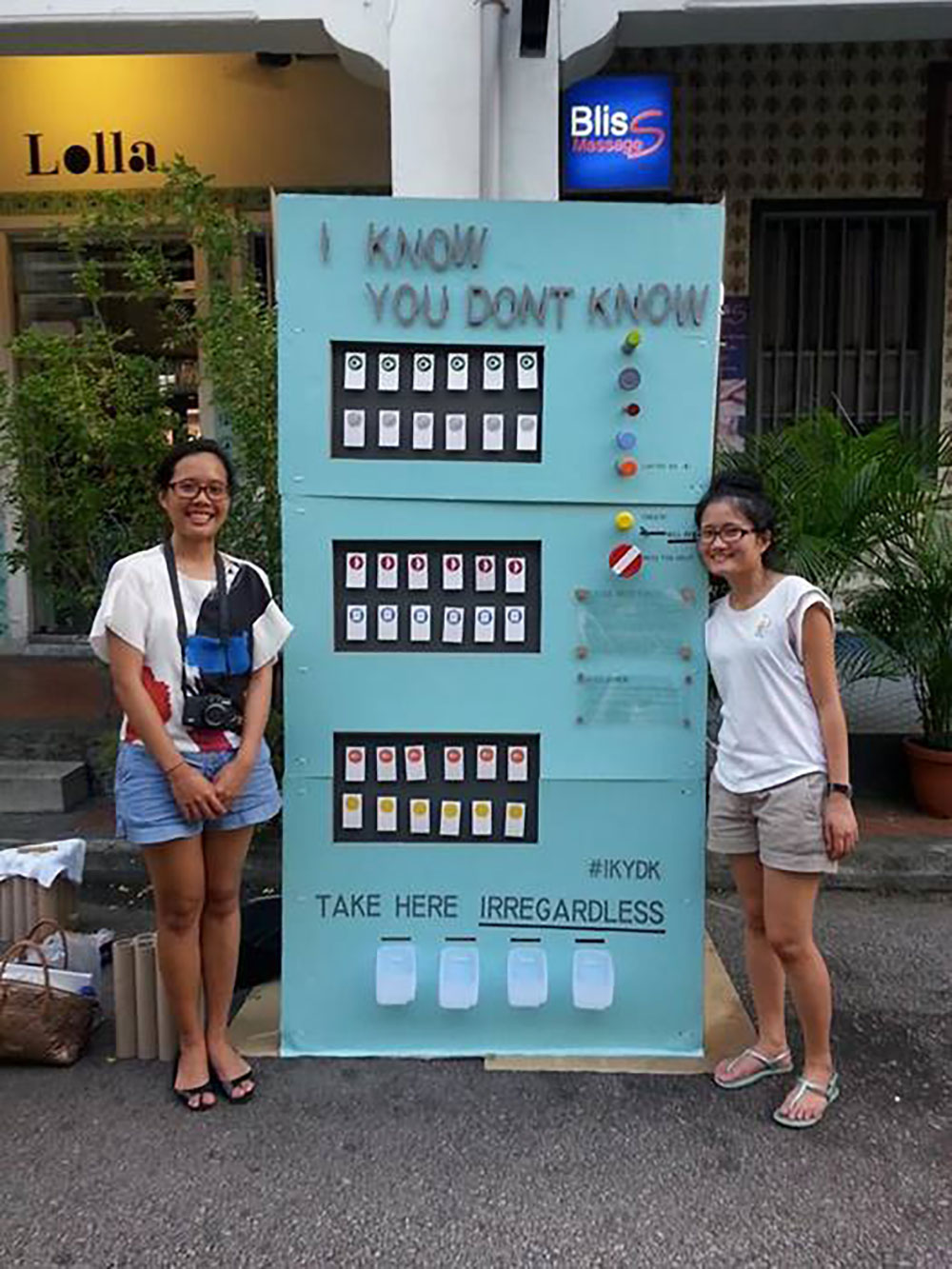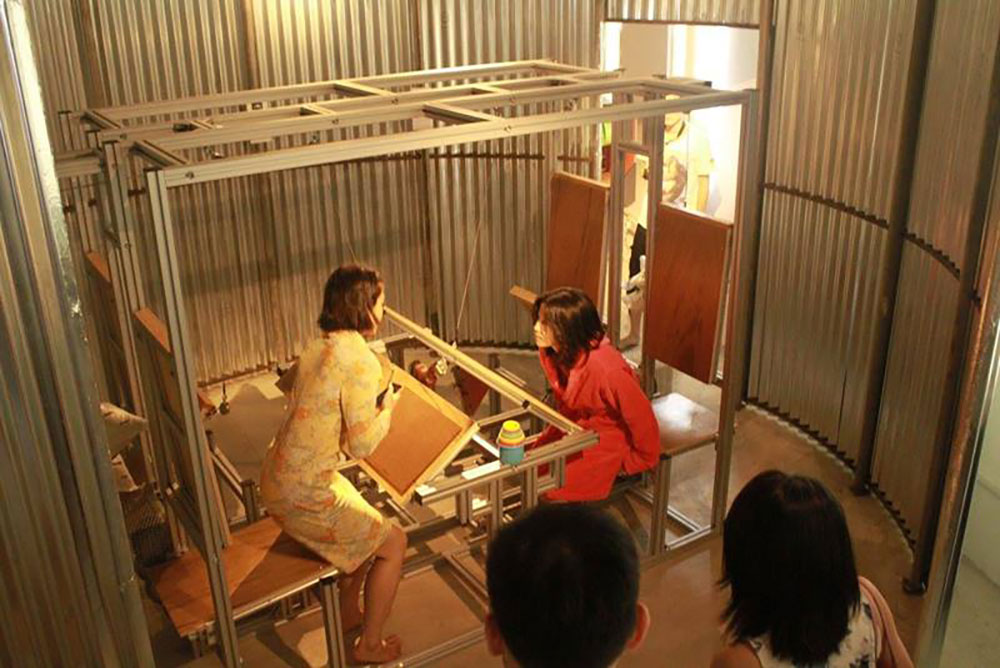Socially Significant Design
Catch up with acclaimed architect and pop-up artist Fiona Tan, as she shares the trials and delights of her profession, eye-opening moments teaching in North Korea, and being an architect in today’s climate. (Article thumbnail picture of Fiona by Meng Kwang Koh)

Being in a creative household encouraged Fiona’s early forays into design and architecture. Her mother worked in the design industry, and her father provided a sounding board for ideas whenever Fiona needed help. As she grew older, it became a norm for her to invite friends over for creative jam sessions and collaborative projects. Such practices inevitably supported Fiona’s transition into her position today as full-time architect, and hobbyist installation artist. With the aid of the DesignCouncil Singapore (Dsg) Scholarship, Fiona graduated with a Masters in Architecture at The Barlett School of Architecture in London, in 2013. Fiona currently works at Zarch Collaboratives, an interdisciplinary design studio with a daring and collaborative vision for groundbreaking projects.
For Fiona, one of the privileges of being in Architecture is having her work create a direct impact on people and society. The most satisfying part of her job is making a tangible difference to the built environment, by seeing a project through from the drawing board to a built and inhabited space. The practice of architecture is a collective effort involving constant dialogue and coordination. Fiona asserts that the same processes are involved in the safeguarding of our built environment. Fiona is grateful for the chance to pursue meaningful conversations in her role as co-curator of Zarch Collaborative project initiative, Eden. Through this programme, she has hosted a series of workshops and conversations involving open dialogues between pioneer architects and peers, and other artists. They touch on topics such as nostalgia, the enbloc craze, and community-centred initiatives, amongst other contemporary social and architectural concerns.

Beyond the conventional definitions of an architectural practice, Fiona is fascinated by the possibilities of engaging in social commentary via transient projects that marry art and architecture. These include pop-up installations, temporary urban interventions, and public pavilions and showcases, that bring an element of surprise to an otherwise predictable urban landscape. One such project was the collaborative venture with Randy Chan and Zenas Deng of Zarch Collaboratives. They created a temporary installation for the 2015 Joo Chiat OH!Open House exhibition. They brought in a coastguard vessel that they docked at the backyard of 136 Tembeling Road which acted as a modern day Noah’s Ark. Named the SS Nimby, the vessel acted as a marine memory capsule. Residents of the neighbourhood were asked to contribute various artefacts and belongings to the installation, responding to the question: “What is the most cherished memory you were to bring with you aboard the Ark?” From a wooden chair, to an antique typewriter, to a treasured Qipao, unique stories of transition, separation, and loss were told through each memento, displayed within the vessel. Combining personal history, heritage, and local engagement, SS Nimby reflects on the things we treasure, asking what is valuable to us, and what we want to endure through the passage of time.

Consider having a long-term perspective on architecture – such a mindset is crucial in persevering in this field, and Fiona herself is learning how to establish such a practice.
In the same year, Fiona’s architectural career took an unexpected turn when she got the opportunity to co-tutor at the inaugural Architecture Association’s Visiting School in PyeongYang, DPRK. She embarked on this journey with friend and fellow architect Calvin Chua, together with the support of the Choson Exchange. Not knowing what to expect going into a notoriously closed-off country, Fiona was deeply moved to witness how a passion for architecture and design can surpass any first moment of language and cultural barriers. Fiona had the chance to share some works by designers SANAA, Zaha Hadid, and Andreas Gursky. Initially apprehensive of how the local architects would resonate with these designers, given the more traditionalist and formulaic school of thought North Koreans subscribed to, she was surprised to find these designers were well received, and the architects could engage meaningfully with the more abstract design concepts involved. It was an eye-opening and refreshing experience for Fiona to share her own inspirations and design practices, while learning distinctly different approaches from others. Fiona was surprised and delighted to find that she was able to translate ideas across cultural and language barriers, via applying a design mindset and sharing designs. This had become the common language which allowed her to transcend language and cultural barriers, to break new ground in an unprecedented area to foster change for the betterment of lives everywhere.

Fiona also expanded her network of established designers and like-minded peers. The network provides a strong support for her and other designers, providing a platform for cross-collaboration and realising ideas. In staging a temporary installation titled INSTANT CITIZEN, Fiona ran into the logistical difficulties of finding an affordable location for her exhibition. Dsg graciously stepped in to set up a workshop where she could speak about her works, and provide a space for a few of her INSTANT CITIZEN pieces to be exhibited.
Speaking about what she hopes for the future of the industry, Fiona would like to see more opportunities for younger and smaller architectural collectives to participate in a larger spectrum of projects without prohibitive tender criteria. She feels the industry could do good to keep an ongoing dialogue with policymakers, economists, and developers, on matters of architectural preservation and redevelopment potential. This is crucial especially in recent cases, where many iconic post-independence buildings designed by local pioneer architects risk being phased out of our urban landscape. Finally, Fiona advises young curious minds to consider having a long-term perspective on architecture – such a mindset is crucial in persevering in this field, and Fiona herself is learning how to establish such a practice.
To find out more about the DesignSingapore Scholarship, click here.






